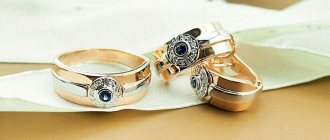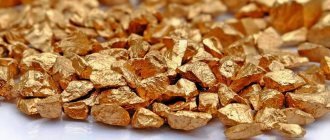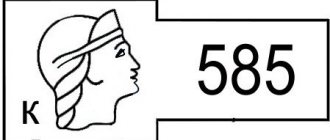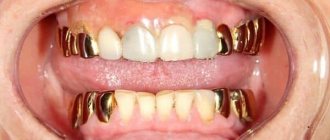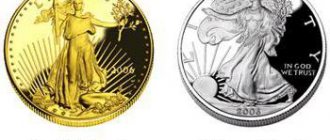In most countries of the world, the carat system for indicating the percentage of gold content in jewelry and precious alloys has been in effect for a long time. According to this system, a gold-based alloy was divided into 24 equal parts, and the number of carats determined how many of these parts in the alloy constituted pure gold. For example, a 14-karat alloy contains 14 parts of pure gold, which is divided into 24 parts of equal weight. The amount of gold in grams per kilogram of alloy is calculated using the formula 14: 24 x 1000, which is 583.33 grams. According to the standards adopted in the old Soviet times, the fractional part was not taken into account, and this is how the 583 gold standard appeared.
Soviet jewelry art versus modern jewelry: which is better?
Disputes among jewelry lovers about which gold standard is better, 583 or 585, continue to this day. Nostalgic citizens not only of our country, but also of neighboring countries, longingly remember the times when gold jewelry could be easily purchased without worrying about its quality. With the collapse of the Soviet Union, the standard for gold jewelry disappeared, giving way to the 585 standard accepted throughout the world.
History of gold 583
The first gold jewelry with 583 hallmark appeared in 1927. The release of such products was a kind of attempt to compare the metric quality system for gold alloy used in the Soviet Union with the carat system accepted throughout the world. The most popular in Western countries were gold products with a pure metal content of just under 59%, or 14 carats. However, the calculation was not entirely successful - the resulting alloy turned out to be less than 14 carats, which caused low demand for Soviet goods in the West. There is another theory according to which jewelry from the USSR was not popular in the world: Western consumers valued jewelry made of white or yellow metal more, while jewelry produced in the Union was produced mainly in a reddish hue. This was due to the presence of copper in the alloy, which additionally imparted high strength to the products and resistance to impacts. Soviet jewelry was highly valued precisely for its lack of tendency to deformation and preservation of its original appearance for the entire period of use. Since in the West, jewelry made of 583 gold was practically not valued, and after the well-known events that led to the collapse of the economy, the country began to urgently need to export gold products, and in order to fully comply with Western standards, new GOSTs were developed that define 585 gold. Since 1995, sample 583 is no longer produced in Russia.
Technical features of Soviet products
It is difficult to say which gold is better, because you should not forget about such a thing as remedium. Remedium is the permissible error in the purity of a precious metal in the jewelry industry. In relation to gold, it fluctuates up to 3 points (if nickel is present in the ligature, then the error is allowed to be 5 points), which means that a 583 sample can easily be 585, and vice versa. The change of samples became a kind of commercial move by Russia, opening the door to the export of gold jewelry. Therefore, the difference in these alloys is negligible, if not completely absent. The difference lies more in the appearance of the jewelry - in Soviet times, quite massive jewelry was produced, compared to modern ones. For example, a wedding ring weighing 6–8 grams was then considered the norm, but today rings weighing about 2–3 grams are popular.
Gold 583 and 585 - what is the difference?
It is quite difficult to answer this question right away. Gold is considered one of the most noble metals in the world, and in ancient times, almost until the end of the 18th century, there were only two such metals - gold and silver. They do not change either under the influence of air, or under the influence of moisture or high temperature. At the turn of the XVIII - XIX centuries. they were also joined by platinum, rhodium, osmium, palladium, and iridium. And the fifth is ruthenium, which was discovered in 1844.
On the territory of the Russian Federation, gold samples are accepted: 375, 500, 585, 750, and 958. In this metric system of samples, the first two digits indicate the percentage of gold in 1000 parts of the alloy. So, let’s say: 750th sample - 75 means that pure gold is 75%, the remaining 25% are impurities of metals that make up such an alloy with the exception of gold, they are called alloy.
In the USA, England, Switzerland and several other countries of the world, the so-called carat sampling system is used. In it, the sample of pure metal is taken to be 24 carats (1000 sample). That is, 958 is comparable to 23-karat, 750 is comparable to 18, 585 is 14-karat. By its nature, gold exists almost exclusively in its pure form, like small beads embedded in quartz or quartz sand.
Gold has an interesting property: it decomposes very easily when exposed to high temperatures, releasing metallic gold. Interestingly, gold can be used not only for all kinds of jewelry, but is also used in the glass industry, it is used in the assembly of chemical equipment, as well as in medicine and in photography. But the vast majority of consumers are naturally interested in jewelry itself. By the way, if your “gold” jewelry is marked 875, you should think about the seller’s honesty.
Gold sample number 585 indicates that the alloy of gold with other metals is taken in a ratio of 585 to 415, i.e. from 1000 gr. of the alloy of such gold the output is 585 grams. gold, and the remaining 415 grams are impurities (that is, alloy).
Since ancient times, man has known that the best alloys are silver and copper. These two metals significantly improve all the physical properties of the alloy. After all, gold in its pure form is very soft, you can practically knead it with your hands, and it also wears out quickly, and products made from it can easily tear.
Previously, 583 gold was widely used in the USSR for the manufacture of jewelry. But time does not stand still, and now Russia has begun, in a sense, to imitate the West, and they use 14-karat fineness. This means that in an alloy of 24 parts, 14 parts are gold and 10 parts are alloy. But if we divide 14 by 24, we get 0.5833333. And a few decades ago they also rounded down to 583.
When Western buyers did not want to purchase such gold, or significantly underestimated its value, then the Russians decided to make 585 as the main standard.
Turkish influence
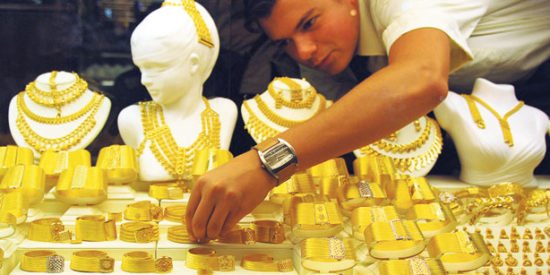
In the 90s of the last century, the Russian market was literally flooded with cheap Turkish jewelry. In fact, these jewelry were made of gold foil, and literally crumbled at the slightest careless movement. All goods imported from Turkey had the 585 hallmark, and people who were accustomed to the durability and reliability of jewelry with 583 gold had negative associations with the new hallmark. At the beginning of 2000, a ban on the import of gold jewelry from Turkey came into force, and consumers of domestic goods were able to see that the new standard was in no way inferior to the Soviet one in quality.
It is difficult to say unambiguously how 585 gold samples differ from 583, provided that their technical characteristics are almost the same. The opinion that old gold does not tarnish compared to new gold is erroneous - this is influenced by the alloy, operating conditions, and other factors.
Scope of application of this alloy
Due to its properties - strength, ductility, easy soldering, scratch resistance, this gold alloy has found wide application in the manufacture of jewelry intended for everyday use. Our grandmothers still wear, without removing, their favorite pendants, earrings or wedding rings, which are decorated with a sample with a star.
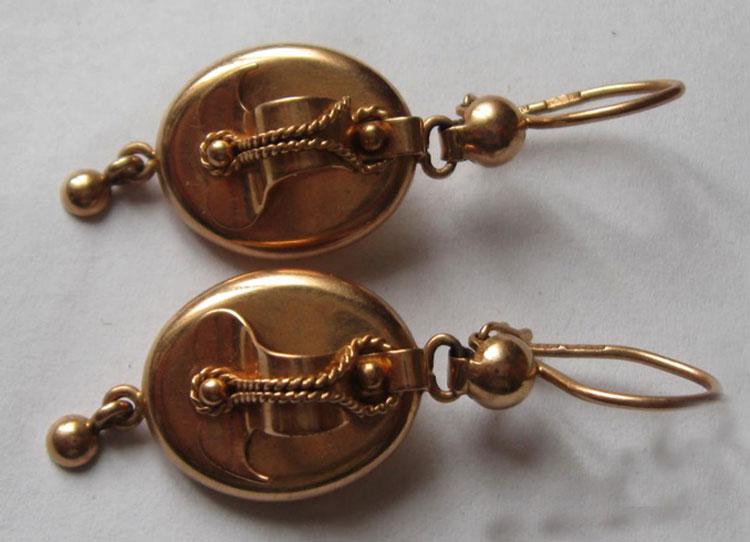
Gold 375 – cheap and beautiful
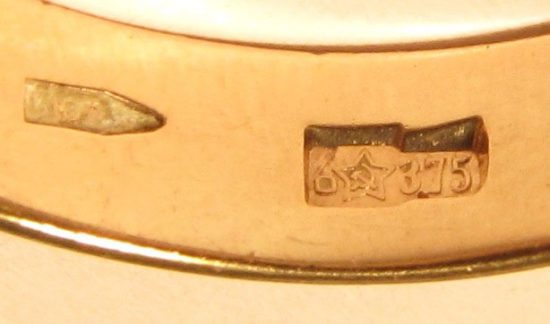
The fairly widely used 375 standard gold contains 37.5 percent pure precious metal in its composition. This greatly influenced the cost of jewelry with a similar sample, but its stability and mechanical strength are unparalleled. It is 375 samples that offer fashionistas and fashionistas genuine masterpieces of jewelry - 750, 585 or 583 samples cannot boast of anything similar. The greater the amount of precious metal in the composition of the product, the softer it will be, and it is not possible to create openwork jewelry without the risk of rapid damage. This is the main difference between low-grade gold.
To summarize, we can highlight the main points that distinguish 375 gold from 585:
- price. The price of a product of a lower standard is significantly lower;
- durability. Jewelry with a low content of precious metal is significantly stronger;
- appearance. The imagination of jewelers regarding alloys with a high gold content is very limited, which cannot be said about low-grade compositions.
Features of 583 gold products
Soviet products are in great demand, considering how much gold 583 costs compared to 585. In addition, a significant role is played by how high-quality and wear-resistant the jewelry is, even when worn every day. And although their appearance is somewhat outdated due to the lack of a diamond cutting, which gives shine, beautiful filigree, large stones and a pleasant red color make the jewelry unique.
The 583 alloy easily takes the desired shape and does not oxidize.
Owners of old jewelry often turn to jewelers with a request to remake them, not wanting to purchase anything from modern factories. Moreover, Western consumers began to appear among fans of 583, appreciating the properties of this sample.
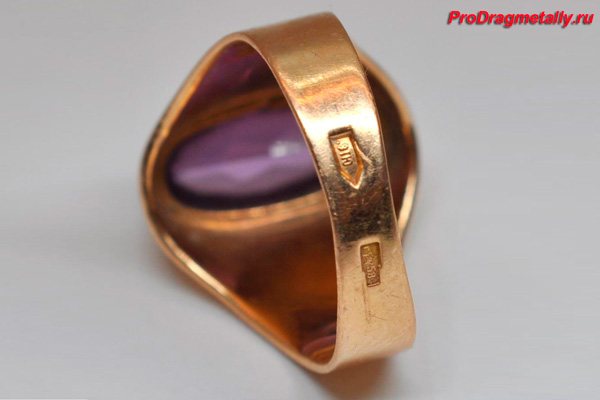
Today, many stores display Soviet jewelry in their windows. Among ladies, gold earrings of 583 standard USSR with large red corundums or diamonds are popular. Men are looking at rings and chains, and for children they are purchasing pendants and small earrings with a loop clasp.
What is the difference between 583 sample and 585
It is impossible not to mention the existing differences between samples, some of which cannot be seen with the naked eye:
- The first of these is the chemical composition of the alloy: 583 samples may contain 0.2–0.5% less pure gold than 585. This takes into account the remedium, which also sometimes gives a difference of 0.1% in the direction of exceeding the amount precious metal.
- The second difference is the appearance of the gold alloy. Products of the Soviet era have a pronounced reddish tint, massiveness and weight.
- Third is the price for sale in stores. The cost of 583 gold, of course, is significantly lower than that of its modern counterpart, which makes it accessible to a wide range of consumers.
Which type of jewelry is better to choose?
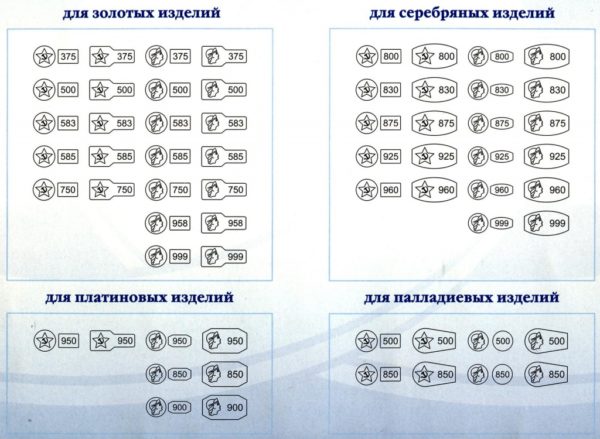
It all depends on a person’s taste - some people like massive products, while others prefer intricate airy decorations. In the first case, you can purchase products from high-quality alloys, but you should prepare in advance for big expenses.
Elegant and sophisticated jewelry made from low-grade gold often indicates the good taste of their owner. Contrary to the established belief that only pure gold does not tarnish over the years, proper care and compliance with all operating rules will allow you to enjoy the pristine beauty of your products for many decades.
Modern jewelry art has almost perfectly studied all the features of the ligature, and by choosing the right composition of the alloy, an experienced jeweler can easily ensure that gold with a low purity will not differ in appearance from a more expensive version. It is worth showing individuality when choosing jewelry, not relying on samples, but choosing really beautiful things.
Composition of Soviet gold
583 gold is often called pure gold, this is due to the color of the metal, namely its reddish tint. The chervonets had a similar ebb. There were also other shades of metal: greenish, pinkish and whitish.
The 583 sample testified to the ratio of the elements that made up the precious metal. Pure gold was always 58%, copper was 33%, and silver was 8%.
The percentage of elements other than the main one could vary and change. This was necessary to achieve the desired shade. For example, if white gold was required, then silver was completely excluded from the alloy, and 16% copper, 17% nickel and 9% zinc were added. If we exclude the last two components, then gold could have pink and green shades.
You may be interested in: What can be profitable to sell to a pawnshop?
At the same time, the price of precious metal from various alloys was approximately the same. Many found this alloy an interesting subject for experimentation to achieve unusual color shades.
Does gold darken
Gold jewelry of 583 and 585 samples, made without violating technology and not exposed to aggressive environments, does not darken. Jewelry should be protected from iodine, mercury, and liquids with a high content of acetone and chlorine. If such a situation occurs and the gold has oxidized for no apparent reason, then this is a reason to take it for inspection.

Why do gold items turn your fingers black?
If the issue is not the poor quality of the ring, then there may be several reasons:
- This is a new item, and it is quite possible that there are residues of polishing paste on it, which caused the darkening on the leather. Over time, the problem will disappear on its own.
- Using hand cosmetics whose components lead to metal oxidation. In this case, changing the cream or avoiding contact of the product used with the rings will help.
Appearance of gold streaks
The sudden appearance of marks from a gold ring on your hand may be a signal of changes in the body. There are no facts confirming the presence of the disease in such a situation, but if suddenly, for no apparent reason, your favorite ring began to leave a noticeable mark, then why not get examined. It definitely won't get any worse.

